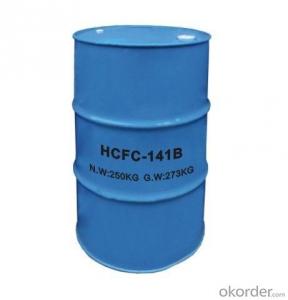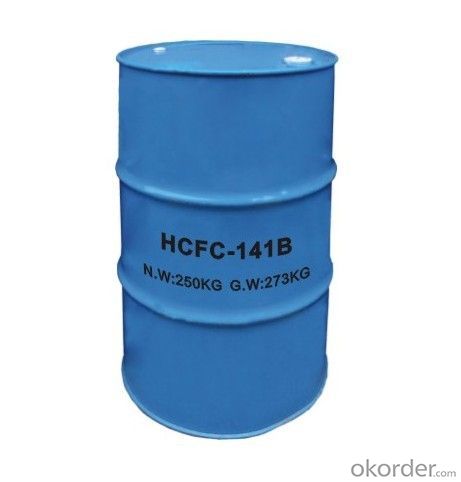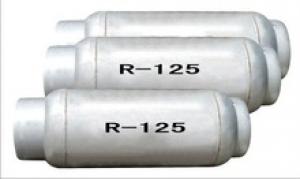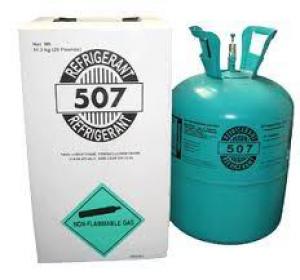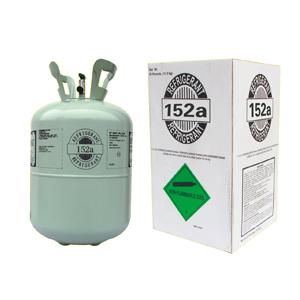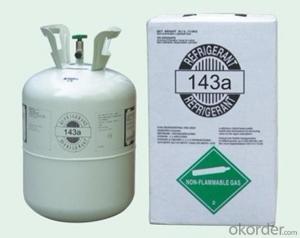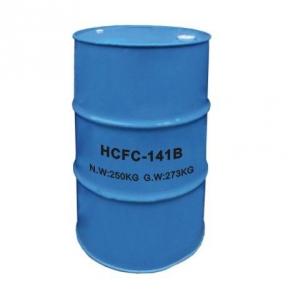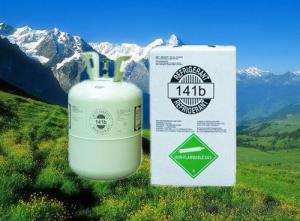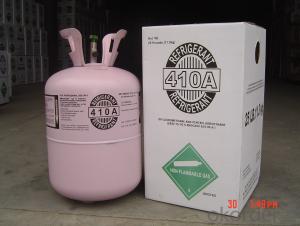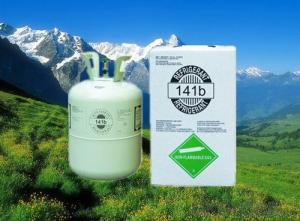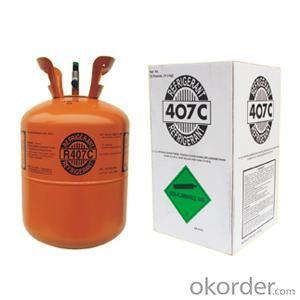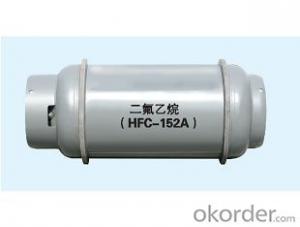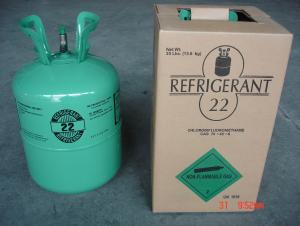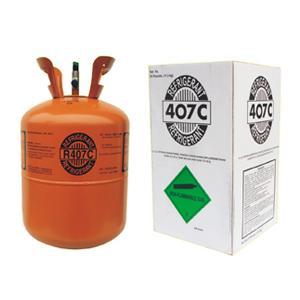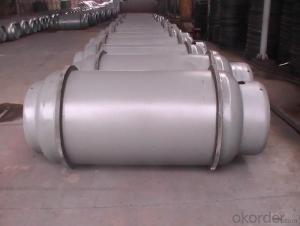R141b for Cleaning Use
- Loading Port:
- Shanghai
- Payment Terms:
- TT OR LC
- Min Order Qty:
- -
- Supply Capability:
- 10000MT m.t./month
OKorder Service Pledge
OKorder Financial Service
You Might Also Like
Specifications
Good Quallity;
Competitive Price;
Cleaning Agent;
Foaming Agent
Dichlofluoroethane(R141b)
R141b (HCFC-141b) is the leading substitute blowing agent for CFC-11 in rigid foam insulation materials which are widely used for residential and public constructions, home applications and transport vehicles.
Properties:
Index | Unit | R141b |
Chemical formula |
| CH3CCl2F |
Molecular weight | g/mol | 117.0 |
Boiling Point 101.3 KPa(°C) | °C | 32.1 |
Freezing Point 101.3 KPa(°C) | °C | -103.5 |
Critical Pressure | KPa | 4640.2 |
Critical Temperature (°C) | °C | 210.2 |
Saturated liquid density (25°C) | Kg/m3 | 1227 |
Specific heat (25°Cliquid) | KJ/kg·k | 1.17 |
ODP |
| 0.11 |
GWP |
| 0.09 |
Quality Specification:
Index | Quality Performance |
Appearance | Bright & Clear Liquid |
Odor | No strange stench |
Purity %≥ | 99.9% |
Moisture %≤ | 0.005 |
Acidity(as HCL) %≤ | 0.00001 |
Evaporation residue %≤ | 0.01 |
Chlorides(Cl-) test %≤ | 0.0003 |
R141b Packing: 13.6kg/30lb; 30kg, 250kg drum.
- Q: What is the difference between an aromatic compound and a hydrocarbon derivative?
- The aromatic compound is a benzene ring containing compound, which may be a hydrocarbon or a hydrocarbon derivative. Hydrocarbons are hydrocarbon-containing compounds, and hydrocarbons containing hydrocarbons other than hydrocarbons are derivatives of hydrocarbons. The two concepts have crossed.
- Q: Is carbon monoxide an organic gas?
- The organic compound contains carbon, hydrogen, oxygen, nitrogen and other elements, a few also contain sulfur, phosphorus, halogen, etc. Any kind of organic compounds, its molecular composition contains carbon, the vast majority also contains hydrogen Elements. Since the hydrogen atoms of the organic compound molecules can be replaced by other atoms or radicals, resulting in a lot of other organic compounds, so modern people generally believe that hydrocarbons and their derivatives known as organic compounds, referred to as organic matter.
- Q: Why does the molecular atom compound do not belong to the life structure
- Life structure is composed of CHO as the main element through the covalent bond of the combination of hydrocarbons and their derivatives, and you said the molecular atomic compounds are usually atomic or ionic bond
- Q: Identification of Derivatives of Chemical Hydrocarbons in High School
- Derivatives have gone, and give a specific range Well
- Q: Are all carbon compounds all organic?
- Not ah, like CO, CO2, carbonated, carbonate is not ah
- Q: How to do it? Solve Inorganic Chemistry
- Inorganic chemistry is one of the earliest disciplines in the development of chemical science. It undertakes a major task of studying the composition, structure, properties and reactions of all elements and elements (except hydrocarbons and derivatives). The current development of inorganic chemistry has two distinct trends, that is, in the breadth of the broadening and depth of the advance. It is the three pillars of modern civilization
- Q: What is the current status of carbon dioxide capture technology and how is it compared to plants that absorb carbon dioxide?
- I think it 's harder if the thing is to be industrialized. = Such as carbon dioxide hydrogenation into methane, after the methane transport or storage is also a relatively large problem bars And not to say that the hydrogenation of carbon dioxide into methane has been studied for a long time, but it does not seem to have developed any big news like ah There is also electrochemical reduction of carbon dioxide. It is relatively easy to produce formic acid in the aqueous phase, such as the Partially oxidized atomic cobalt oxide for carbon dioxide electroreduction to liquid fuel (Nature: Nature Publishing Group) recently made by Xie Yi. The But the separation of formic acid and water is also a more difficult thing ah. The
- Q: Why not ah?
- A series of compounds in which a hydrogen atom in a hydrocarbon molecule is replaced by another atom or radical is called a derivative of a hydrocarbon
- Q: Why artemisinin and its derivatives in the molecular structure of a peroxide chain, the chemical properties are more stable?
- Stable, then it will not be 60 degrees that is broken down, there is no need for rectal administration ... ...
- Q: Why does the hydrocarbon derivative make the bromine water fade and the hydrocarbon can not
- Should be able to ah and bromine water addition reaction and fade:
Send your message to us
R141b for Cleaning Use
- Loading Port:
- Shanghai
- Payment Terms:
- TT OR LC
- Min Order Qty:
- -
- Supply Capability:
- 10000MT m.t./month
OKorder Service Pledge
OKorder Financial Service
Similar products
Hot products
Hot Searches
Related keywords
